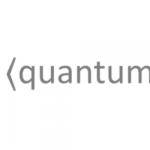Artificial neurons go quantum with photonic circuits

(Phys.org) The University of Vienna research describing artificial neurons has been described in always excellent Phys.org. Inside Quantum Technology summarizes here.
Physicists at the University of Vienna have now demonstrated a new device, called the quantum memristor, which may allow us to combine the two worlds of AI and quantum technology, unlocking unprecedented capabilities. The experiment, carried out in collaboration with the National Research Council (CNR) and the Politecnico di Milano in Italy, has been realized on an integrated quantum processor operating on single photons. The work is published in the current issue of the journal Nature Photonics.
At the heart of all artificial intelligence applications are mathematical models called neural networks. These models are inspired by the biological structure of the human brain, made of interconnected nodes.
One of the major game changers in the field was the discovery of the memristor, made in 2008. This device changes its resistance depending on a memory of the past current, hence the name memory-resistor, or memristor.
A group of experimental physicists from the University of Vienna, the National Research Council (CNR) and the Politecnico di Milano, led by Prof. Philip Walther and Dr. Roberto Osellame, have now demonstrated that it is possible to engineer a device that has the same behavior as a memristor, while acting on quantum states and being able to encode and transmit quantum information. In other words, a quantum memristor. Realizing such a device is challenging because the dynamics of a memristor tend to contradict typical quantum behavior.
By using single photons (i.e., single quantum particles of lights) and exploiting their unique ability to propagate simultaneously in a superposition of two or more paths, the physicists have overcome the challenge.
“Unlocking the full potential of quantum resources within artificial intelligence is one of the greatest challenges of the current research in quantum physics and computer science,” says Michele Spagnolo, who is first author of the publication in the journal Nature Photonics. This new achievement represents one more step towards a future where quantum artificial intelligence becomes reality.



















